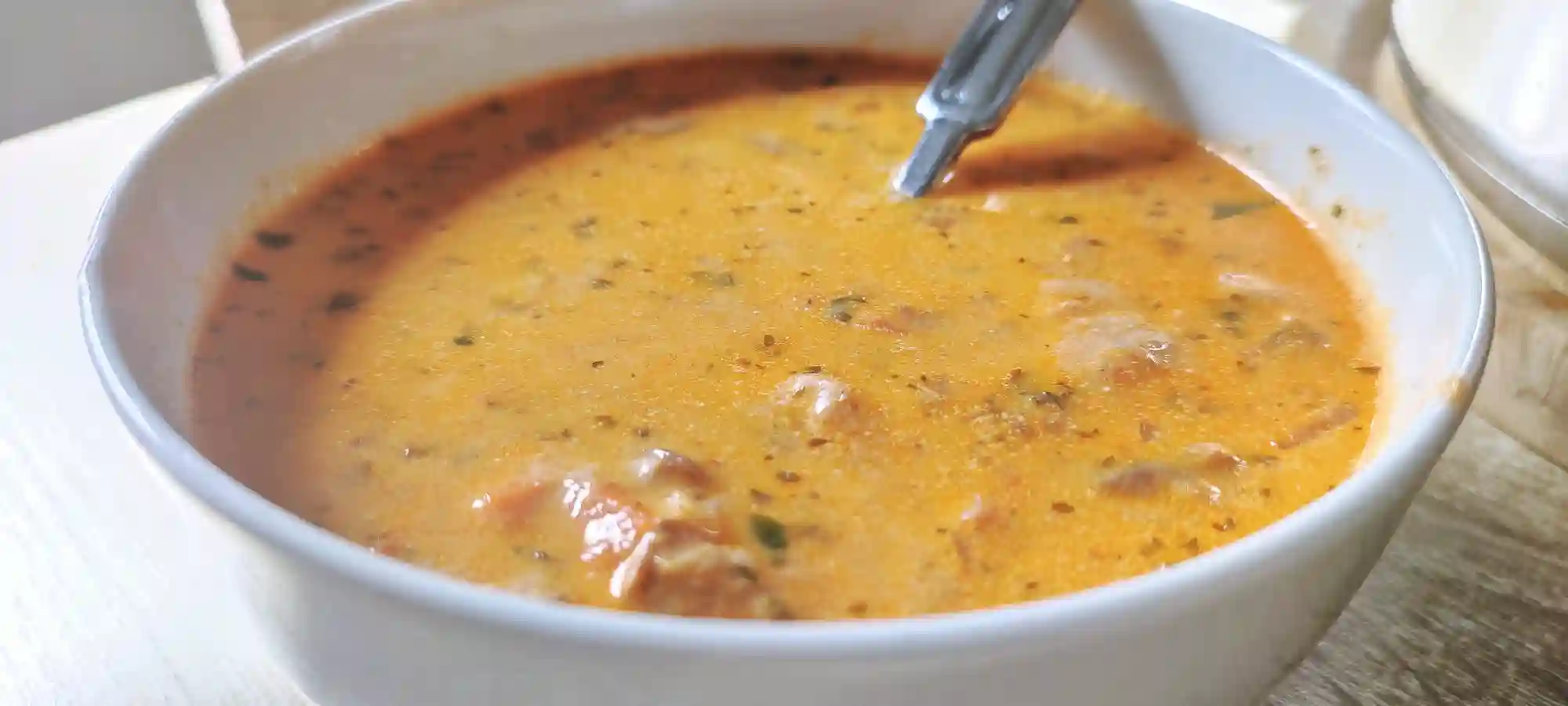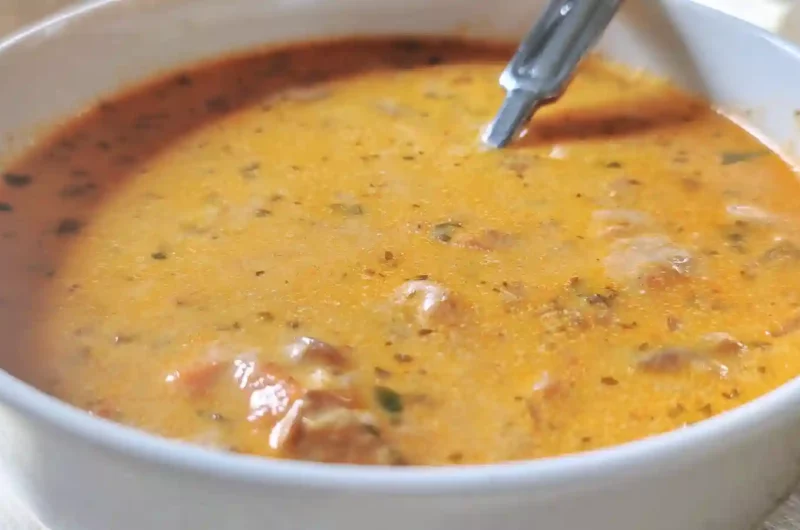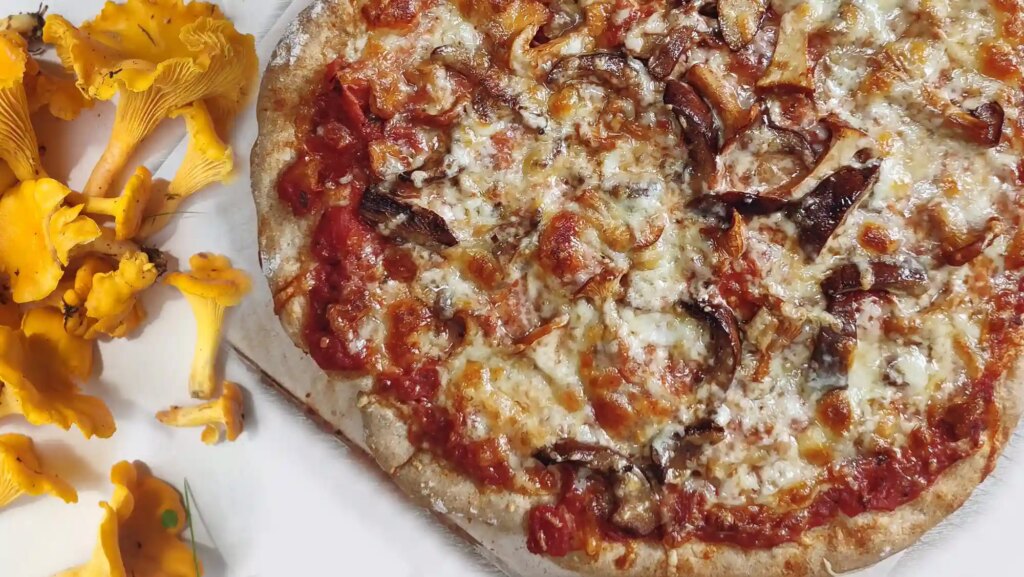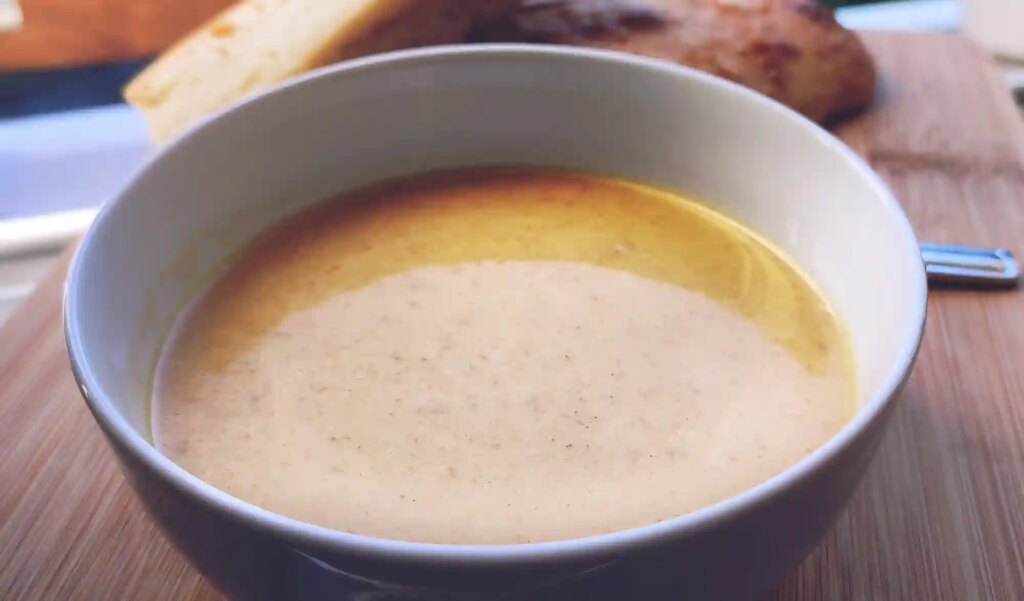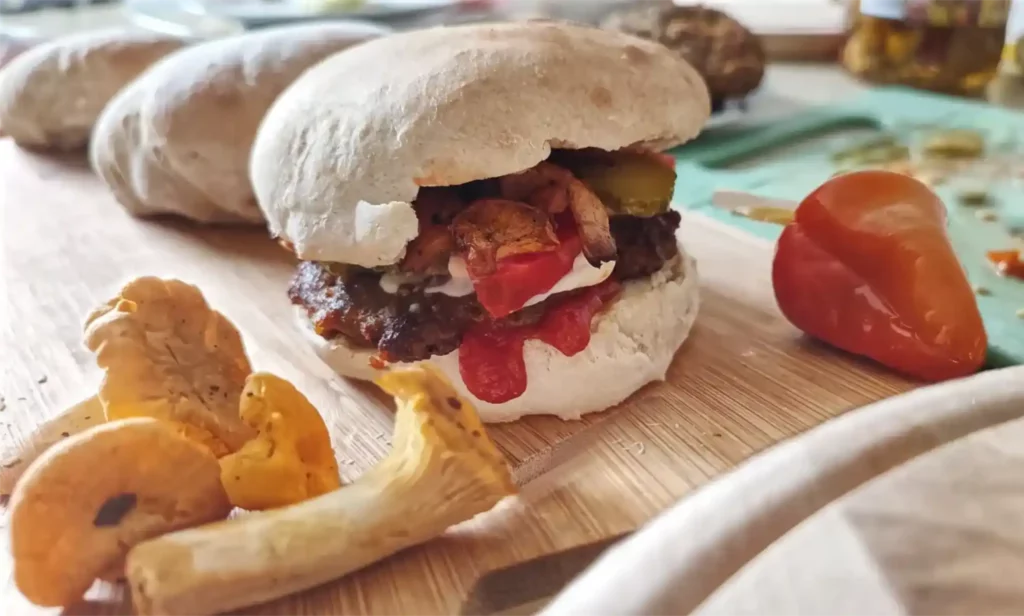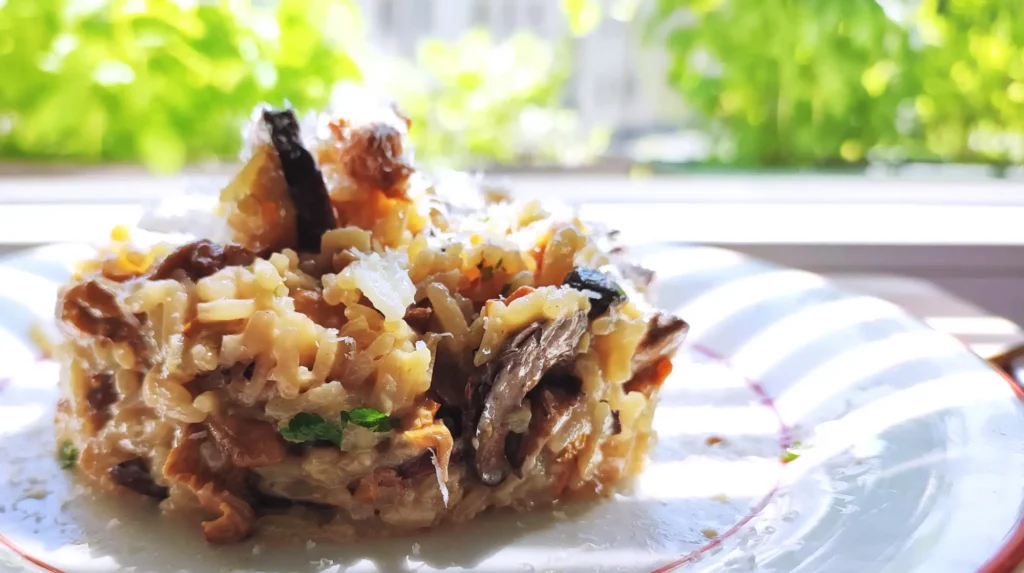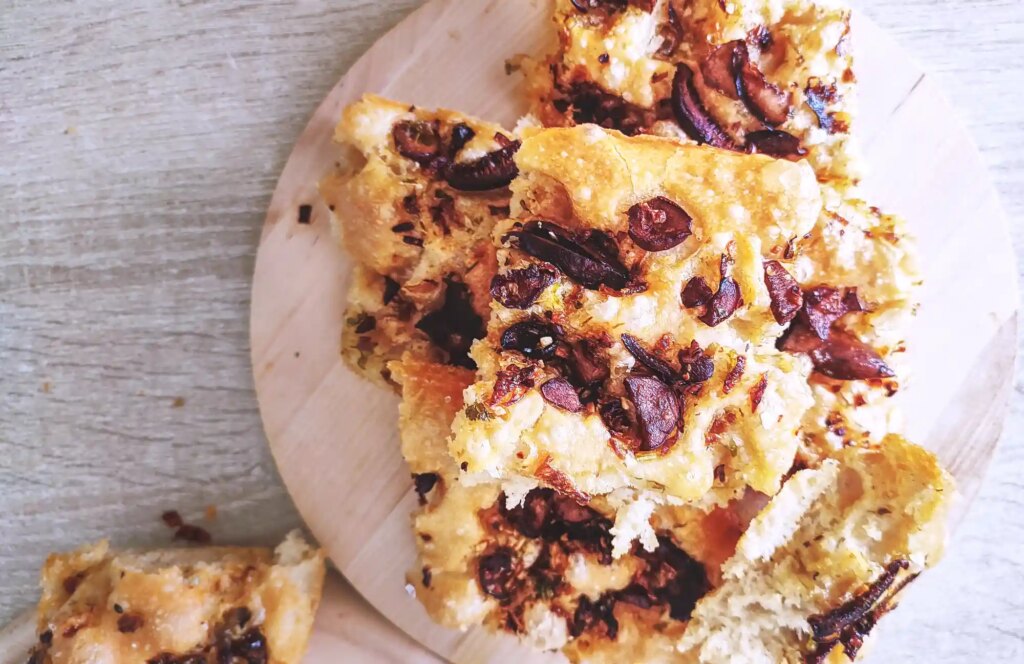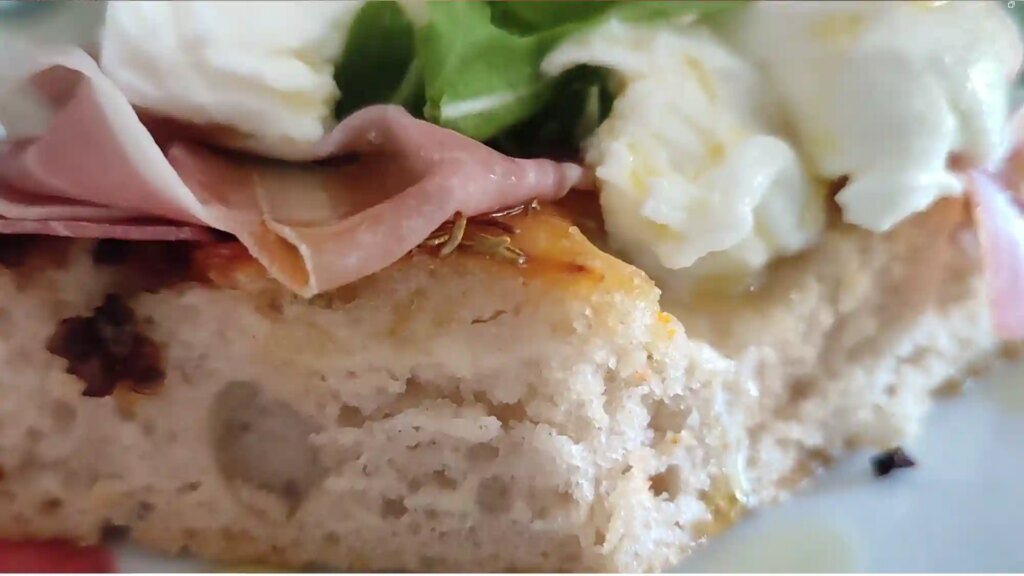The base for this delicious and simple parasol mushroom soup is, of course, parasol mushroom (macrolepiota procera). Then tomato sauce and heavy cream. The rest of the ingredients are all around your kitchen anyway :). The best thing about this soup is that you can make a lot of it and freeze it.
Jump to RecipeTable of Contents
Parasol mushroom soup is great for freezeing
If you’ve ever wandered through the woods and stumbled across a patch of those majestic mushrooms that look like nature’s umbrellas, you’re in for a treat.

The parasol mushroom (Macrolepiota procera) is a very tasty mushroom. I usually only eat them fried or in place of pizza dough. That is why this recipe for parasol mushroom soup appealed to me as it was something new. But very, very tasty. The best thing is that you can make a lot and freeze the soup.
I’ve tried freezing the parasol mushrooms several times, but always without success, as they tend to lose their nutty flavour. But they don’t lose the flavour in this soup ;). Weeehooo, what a victory.
Parasol Mushroom Soup Recipe
Amazing Parasol Mushroom Soup
Difficulty: Easy4
servings15
minutes20
minutes35
minutesThe base for this delicious and simple parasol mushroom soup is, of course, parasol mushroom (macrolepiota procera). Then tomato sauce and heavy cream. The rest of the ingredients are all around your kitchen anyway :). The best thing about this soup is that you can make a lot of it and freeze it.
Ingredients
5-7 parasol mushroom caps
2 small onions
2 garlic cloves
1/2 liter (2.1 cups) of water
230 ml (1 cup) of tomato sauce
2 fresh tomatoes
200 ml (0.8 cups) of heavy cream
Salt and pepper
Dried or fresh parsley
Dried basil (if desired)
Dried Parsnip powder
Directions
- Rinse and pat dry each of the 5-7 parasol mushroom cap.
- Dice the small onions and garlic cloves. Dice the small onions and garlic cloves.
- Heat a pot over medium heat. Add a bit of oil or butter, and sauté the onions and garlic until they turn translucent.
- Make a small cross-cut on each tomato. Cover the fresh tomatoes with boiling water, leave them for 5-6 minutes, then remove the skin. Chop the fresh tomatoes and add them to the pot along with the tomato sauce. Stir it all together and let it simmer for another 5 minutes, allowing the flavors to meld.
- Slice your parasol mushroom cap into thin strips and add them to the pot. Let them cook for about 5-7 minutes until they start to shrink.
- Pour in the water. Adjust the amount of water according to your preference for soup thickness. Bring it to a boil.
- Add the heavy cream, which will give your soup a luxurious creaminess. Stir well and let it simmer for an additional 5 minutes.
- Now, it’s time to season your soup. Sprinkle in some salt, pepper, dried or fresh parsley, and a pinch of dried basil if you like. Add a dash of dried Parsnip powder for extra flavor depth.
- Remove the pot from the heat and let it cool slightly. Then, blend everything until you have a smooth, creamy soup.
- Before serving, taste it and adjust the seasoning if necessary. You want it to be just right!
- Ladle your parasol mushroom soup into bowls. If you’d like, add a sprinkle of fresh parsley on top or serve with a spoonful of sour cream. Serve it piping hot and watch those smiles around the table :).
Recipe Video
Notes
- This can easily become a creamy soup too. Before serving, remove the pot from the heat and let it cool slightly. Then, blend everything until you have a smooth, creamy soup.
Parasol Mushrooms
Let’s talk a little about parasol mushrooms and what makes them so unique. These fungi species can grow up to 40 centimetres in height and diameter! Yes, giants in the mushroom kingdom.
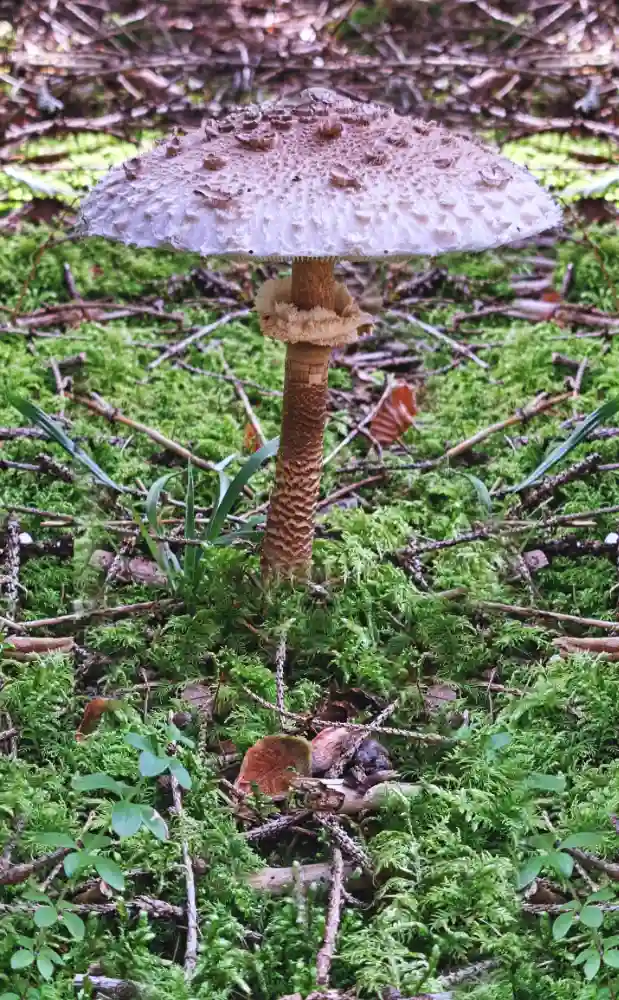
Macrolepiota procera is not a mushroom for beginners. It can be easily mistaken for another similar species, which can even be dangerous.
For example it is very often mistaken with Shaggy Parasol which doesn’ta have snake pattern of stem. This just shows how you have to inspect every detail of the mushroom before you decide it is safe for consumption. Correct identification is a must. Always be aware of where it grows, Parasol is a forest mushroom. Stay away from giants that look like Parasol but grow on compost or in the garden.
Parasol should have a snake-like pattern on the stem. The colour of the pattern is the same as the colour of the skin cracks on the cap. Smells like almonds. Has a ring that can be repositioned and moved up and down the stem. Gills are white to cream-coloured and break easily.
Parasol mushrooms are absolutely delicious, when prepared correctly, which is why I’m so excited to share this amazing recipe for Parasol mushroom soup with you.
Just remember that when it comes to wild mushrooms, caution is your best friend. Proper identification will ensure they’re safe.
Nutritional information table Parasol Mushroom Soup
| Nutrient | Amount per Serving |
|---|---|
| Calories | 200 |
| Total Fat | 15g |
| – Saturated Fat | 8g |
| Cholesterol | 40mg |
| Sodium | 600mg |
| Total Carbohydrates | 12g |
| – Dietary Fiber | 2g |
| – Sugars | 4g |
| Protein | 5g |
Nutritional Aspects of Parasol Mushrooms
Parasol mushrooms offer several health benefits and are a nutritious food source. BUT there are potential nutritional risks associated with heavy metal accumulation.
To enjoy the benefits of these mushrooms while minimizing the risks, it’s advisable to source them from safe locations. Consume them in moderation, use appropriate cooking methods, and be aware of individual sensitivities or allergie
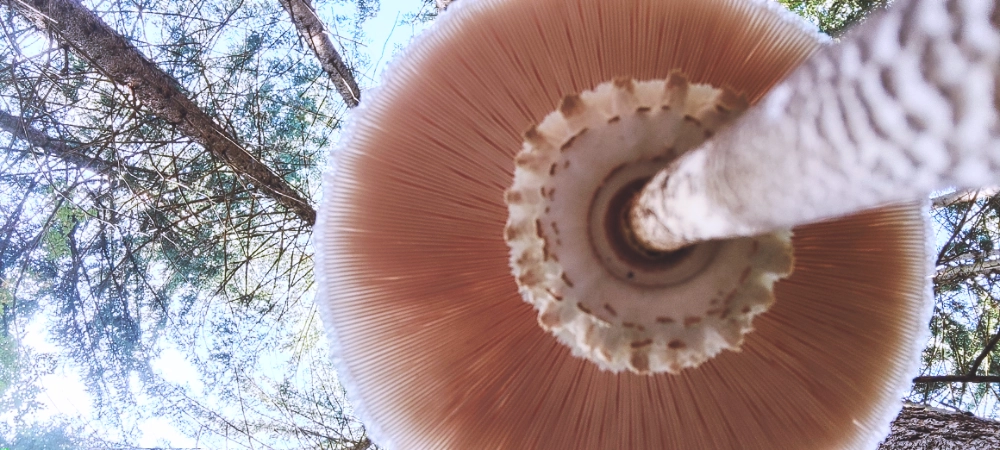
Mostly information gathered from this article: Possibilities of Using Macrolepiota procera in the Production of Prohealth Food and in Medicine
Benefits of Eating Parasol Mushrooms
- Nutritional Value: Parasol mushrooms are a nutritious food source, with a calorific value ranging from 52 to 58 kcal per 100g of fresh weight. They are low in fat and provide essential nutrients.
- Bioactive Substances: These mushrooms contain various bioactive substances, including free amino acids, mannitol, trehalose, glycerol, and glucose. They also contain chitin, a polysaccharide similar to dietary fiber.
- Fatty Acids: Parasol mushrooms have predominantly unsaturated fatty acids, with linoleic acid as the dominant fatty acid. Unsaturated fatty acids are considered healthier for the body.
- Mineral Composition: They are rich in essential minerals such as sodium, potassium, magnesium, calcium, iron, manganese, zinc, and copper. The mineral content can vary between different parts of the mushroom and is influenced by factors like age and substrate.
- Antioxidant Properties: Parasol mushrooms, like other mushrooms, are rich in antioxidants, including phenolic compounds, phenolic acids, flavonoids, and more. These antioxidants help combat free radicals in the body.
- Potential Immune Boost: The presence of glucans, especially beta-glucans, in parasol mushrooms can stimulate the immune system, making immune cells more active and ready to fight infections.
- Anticancer Effects: Glucans in these mushrooms can also enhance the activity of T lymphocytes and have potential anticancer properties.
- Heart Health: Glucans in parasol mushrooms may contribute to lowering cholesterol levels, benefiting heart health.
- Preservative Properties: Fumaric acid found in these mushrooms is used as a food preservative, helping keep food fresh for longer.
- Lectin for Pest Defense and Drug Delivery: Parasol mushrooms contain lectins like MpL, which not only act as a natural defense against pests but are also being explored as carriers for anticancer drugs.
- Triterpenes with Anticancer Properties: Triterpenes called lepiotaprocerins found in these mushrooms have shown potential in fighting cancer.
- Immune System Support: Fucogalactan, found in related mushrooms, has immunostimulating effects.
- Antidepressant Potential: Parasol mushrooms contain indole derivatives that can have antidepressant effects, making them a potential dietary addition for mood improvement.
- Gut Health: Special polysaccharides found in parasol mushrooms can promote the health of gut bacteria, contributing to overall digestive well-being.
- Cooking Considerations: Cooking at low temperatures may help preserve the antioxidants in these mushrooms.
Risks related to eating Parasol Mushrooms
- Heavy Metal Accumulation: Parasol mushrooms have the ability to absorb heavy metals from their enviroment. Some of the heavy metals that can accumulate in these mushrooms include silver (Ag), rubidium (Rb), copper (Cu), zinc (Zn), mercury (Hg), cobalt (Co), cadmium (Cd), nickel (Ni), and lead (Pb). Excessive consumption, especially if the mushrooms are grown in contaminated areas, could lead to heavy metal intake exceeding recommended daily limits, which may pose health risks, including chronic poisoning.
- Cooking Methods: The choice of cooking method can affect the nutritional content of parasol mushrooms. High-temperature cooking may break down some antioxidants, potentially reducing their effectiveness. Therefore, it’s advisable to use low-temperature cooking methods to preserve these beneficial compounds.
- Individual Allergies or Sensitivities: Like any food, some individuals may be allergic or sensitive to certain components of parasol mushrooms. It’s important for individuals with known allergies or sensitivities to mushrooms or related foods to exercise caution when consuming them.
REE study
Since M. procera is a popular edible mushroom, assessing the presence of REEs in these mushrooms is important for food safety. The study found that the levels of REEs in the mushroom caps were low and not considered a health risk, reassuring consumers about the safety of consuming these mushrooms.
Rare earth elements in parasol mushroom Macrolepiota procera
However, as with any wild mushroom foraging, it’s essential to exercise caution and ensure proper identification before consuming any mushrooms. Some wild mushrooms can be toxic, so it’s crucial to have expertise in mushroom identification or consult with an experienced forager to confirm the safety of the mushrooms you intend to eat.

